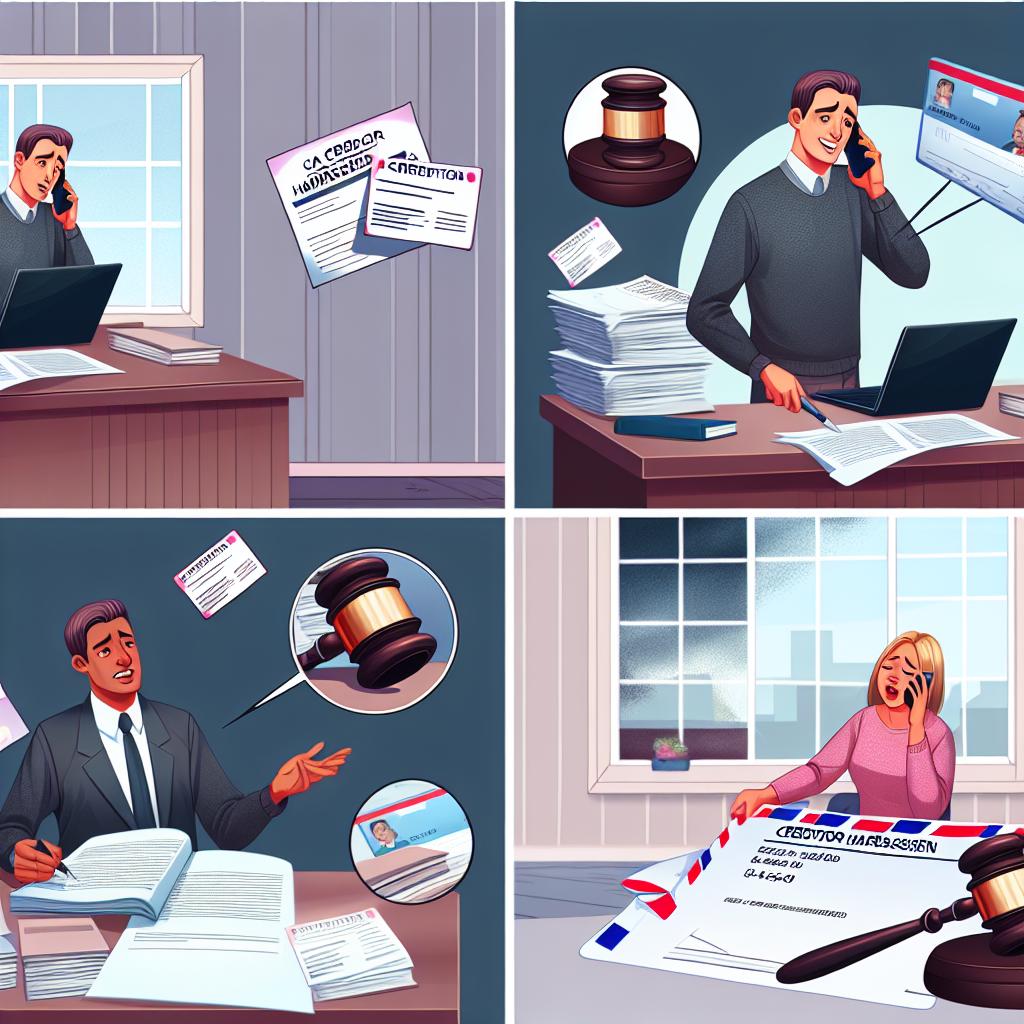Understanding Creditor Harassment
Before diving into the steps to handle creditor harassment, it’s crucial to understand what it entails. Creditor harassment occurs when debt collectors use aggressive, threatening, or coercive tactics to collect a debt. In many jurisdictions, laws protect individuals from such practices. These legal safeguards are integral in maintaining individuals’ rights and preventing abuse by creditors.
Know Your Rights
The first step in handling creditor harassment is understanding your rights. Various laws, such as the Fair Debt Collection Practices Act (FDCPA) in the United States, prohibit creditors from engaging in abusive, unfair, or deceptive practices. It’s imperative for individuals to familiarize themselves with their rights regarding communication limits, acceptable collector behavior, and dispute processes. This knowledge forms the foundation for confidently addressing any unjust treatment you might encounter from creditors or debt collection agencies.
Understanding Communication Limits
Effective communication is crucial in managing interactions with creditors. The FDCPA sets strict boundaries on when and how collectors can engage with you. Collectors are restricted from calling at inconvenient times, such as before 8 a.m. or after 9 p.m., unless you have agreed to such timings in writing. They are also prohibited from contacting you at your workplace if you let them know verbally or in writing that you’re not allowed to receive calls there. Such legal boundaries are put in place to protect you from excessive or inappropriate communication that could lead to stress or embarrassment.
Adequate Collector Behavior
Collectors are legally obliged to behave in a professional manner. Harassment, oppression, or abuse during the collection process is strictly forbidden. This includes prohibitions on using threats of violence or harm, publishing a list of individuals who refuse to pay debts (other than to a credit bureau), or using obscene or profane language. Understanding these boundaries ensures that you are not coerced or intimidated by collectors exploiting your lack of awareness.
Document Every Interaction
Maintaining detailed records of all communications with the creditor or collection agency is essential. Document the date, time, and nature of each contact. If possible, note the name of the person you spoke with and keep any written correspondence in a safe place. This approach offers two key benefits: keeping intact a comprehensive record of interactions and providing valuable evidence if you need to escalate the situation or seek legal recourse.
Request Written Communication
To help prevent harassment, request that the creditor communicate with you in writing instead of over the phone. You can make this request in writing, specifying that you do not wish to continue receiving phone calls. Transitioning to written communication not only mitigates stress but also ensures that a clear record of your interactions is maintained, which can be critical in the event of disputes. This documented trail lays the groundwork for any necessary legal action.
Consult Legal Resources
If harassment persists, consider seeking legal advice. Many consumer advocacy organizations and legal aid societies offer resources and assistance for those dealing with creditor harassment. A lawyer specializing in consumer protection can provide advice tailored to your specific situation, including potential actions you can take against the harasser. Recognizing when to seek help can safeguard your rights and provide strategic guidance on navigating the complexities of debt collection.
Dispute Inaccurate Debts
If you’re being harassed for debts you do not owe, it’s crucial to dispute these inaccuracies promptly. Send a written dispute letter to the creditor and any collection agencies involved. Provide copies (not originals) of any documents that support your claim. Under many legal frameworks, creditors must investigate and resolve disputes within a specified period. Prompt dispute of inaccuracies limits further unwarranted collection efforts and ensures the integrity of your financial standing.
File a Complaint
If the harassment continues despite your efforts, consider filing a complaint with the appropriate regulatory body. In the U.S., this could be the Consumer Financial Protection Bureau (CFPB) or the Federal Trade Commission (FTC). Other countries have equivalent bodies handling such complaints. Filing a complaint raises awareness to the practices of offending companies and can contribute to broader regulatory action to curtail industry abuses.
Consider Cease and Desist Letters
A formal cease and desist letter requires the creditor to stop contacting you. This should only be used if all other attempts to resolve the situation fail, as it may prompt the creditor to take legal action for debt recovery. Always consult with a legal professional before drafting and sending a cease and desist letter to ensure it’s executed correctly and is legally binding. By legally mandating a cessation of communication, you create a pause that can facilitate a more structured approach to resolving the underlying debt issue.
Conclusion
Dealing with creditor harassment can be stressful, but by understanding your rights and taking appropriate steps, you can manage the situation effectively. Always stay informed about the laws that protect you and seek professional advice if necessary. Establishing a well-documented history of interactions with creditors, knowing when and how to engage legal resources, and pursuing formal complaints where necessary, arms you with a robust toolkit for navigating creditor harassment. Implementing these steps proactively not only addresses immediate concerns but also reinforces broader consumer protections regulating creditor behavior.
